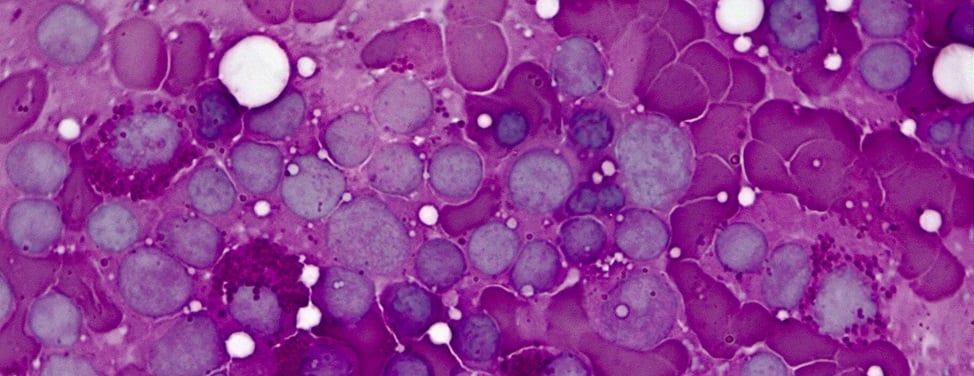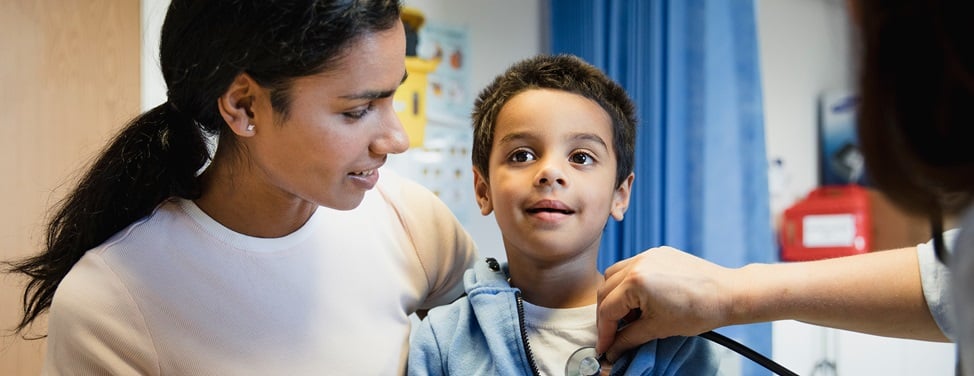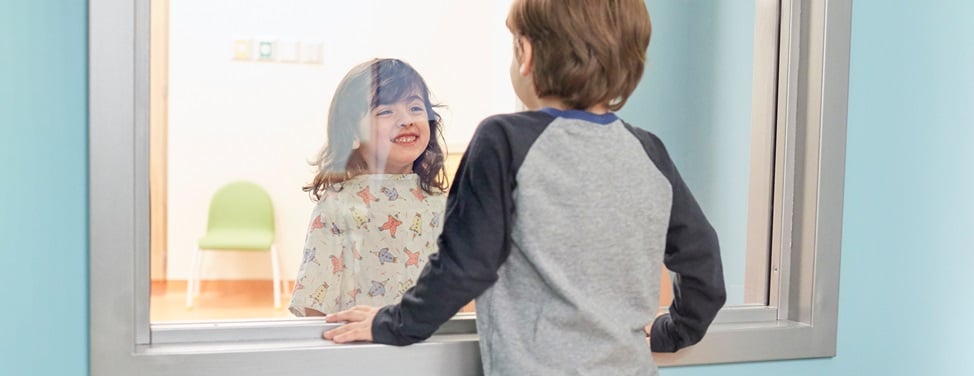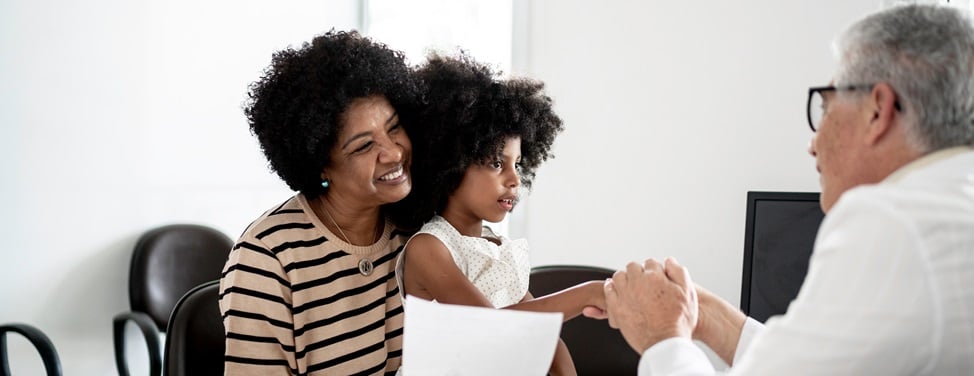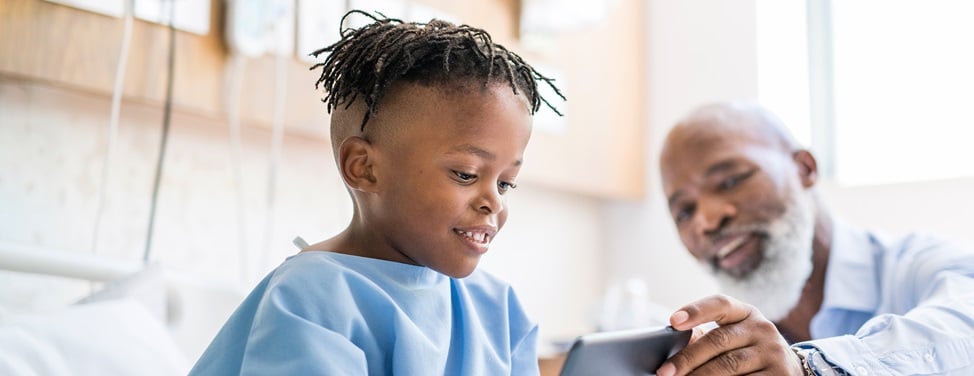There are several different types of donors including:
- Relatives, usually siblings or parents
- Unrelated volunteers
Before the procedure, donors are often frightened of the unknown and feel better after discussing their thoughts and fears with the health care team. Information about donation is discussed at an age-appropriate level. Children who are donors meet with the child life specialist and are given a chance to use puppets and other forms of play.
Depending on a number of factors, the donor may either undergo a bone marrow harvest or a peripheral blood stem cell collection.
Bone Marrow Harvest
During the bone marrow harvest, which usually occurs on the day of the transplant, a small portion of bone marrow is collected from the donor while under anesthesia in the hospital.
Because a significant amount of blood is taken with the marrow, the adult donor may be asked to donate one to two units of his or her own blood, called auto donation, approximately one to two weeks before to the harvest. The nurse coordinator or the clinical nurse specialist will make these arrangements. Following the marrow harvest, the donor's blood is infused back into the donor. The goal of this approach is to minimize the need for a blood transfusion from an outside source after the harvest.
One to two weeks prior to the day of transplant, the donor is examined by a doctor:
- Adult donors are seen by an internist, who performs a screening history and a physical
- Sibling donors are seen by the attending transplant physician
On the day before the transplant, the consent for anesthesia and surgery is signed with the attending transplant physician and the donor is evaluated by the anesthesiologist in the Prepare Clinic. Paperwork and additional blood tests are a part of the pre-admission process.
After midnight, the donor cannot eat or drink anything. On the morning of the bone marrow harvest or collection, the donor is admitted to the pre-op area on the fourth floor. There will be doctors, nurses and other patients in this area, including the attending transplant physician who will be performing the bone marrow harvest. The operation usually begins around 7:30 a.m.
In the operating room, the anesthesiologist will administer the anesthesia that will put the donor to sleep. The doctors will then collect a small portion of bone marrow from the upper part of the pelvic bones. This process usually takes two to four hours, but may take longer depending on the amount of marrow needed.
The donor will wake up in the recovery room before being taken to his or her hospital room. A large bandage will cover the area from where the bone marrow was taken. Between one to six needle marks will be visible on the donor's skin. The donor will be sore following donation and will have some bruising. The amount of pain varies from donor to donor, and can last from a few days to several weeks. Medications will be given to help relieve the pain.
The nurses will be checking the dressings for drainage at the needle sites and change the dressings as needed. An intravenous (IV) line will be in place following surgery in order to administer routine antibiotics to minimize infection. Adult donors are admitted to one of the adult medical units, usually on the 11th floor. Sibling donors are admitted to the seventh floor. The adult donor usually leaves the hospital one day after surgery. The sibling donor may be able to leave on the evening of surgery.
For unrelated donor marrow transplants, the same procedure occurs but at a donor center nearest to the donor's home. The marrow is then brought to UCSF Benioff Children's Hospital for further processing and administration to the recipient.
Peripheral Blood Stem Cell Collection
The peripheral blood stem cell (PBSC) collection is done as an outpatient. Beginning five days prior to transplant, the donor receives one to two daily injections of a drug called granulocyte colony stimulating factor (G-CSF), which stimulates recruitment of bone marrow stem cells into the circulating blood. Common side effects include headaches and bone pain, which are relieved with Tylenol or ibuprofen.
The donor is admitted as an outpatient on the morning of the fifth day (the day of transplant) to the Leukapheresis Unit on the ninth floor of the hospital. For most adult donors, special catheters are placed under local anesthesia in the veins in each arm.
For the young sibling donor, a double lumen catheter is placed under local or general anesthesia either in a vein in the neck or groin. This may be done in the operating room by one of the pediatric surgeons using general anesthesia or in the Leukapheresis Unit or the Cardiac Catheterization Laboratory by one of the pediatric cardiologists using local anesthesia. The catheters are necessary in order to carry blood to the apheresis machine, where the stem cells are collected, and to return the residual blood back to the donor.
The PBSC collection takes four to five hours during which the donor can sleep, read or watch television. Typically, only a single collection is necessary, following which the catheter(s) are removed and the donor is able to go home.
The PBSC are either administered directly to the recipient or taken to the Pediatric BMT Laboratory for further processing prior to transplant.
When a second donation is necessary, the donor will need to receive another injection of G-CSF and may need to stay in the hospital overnight.





























